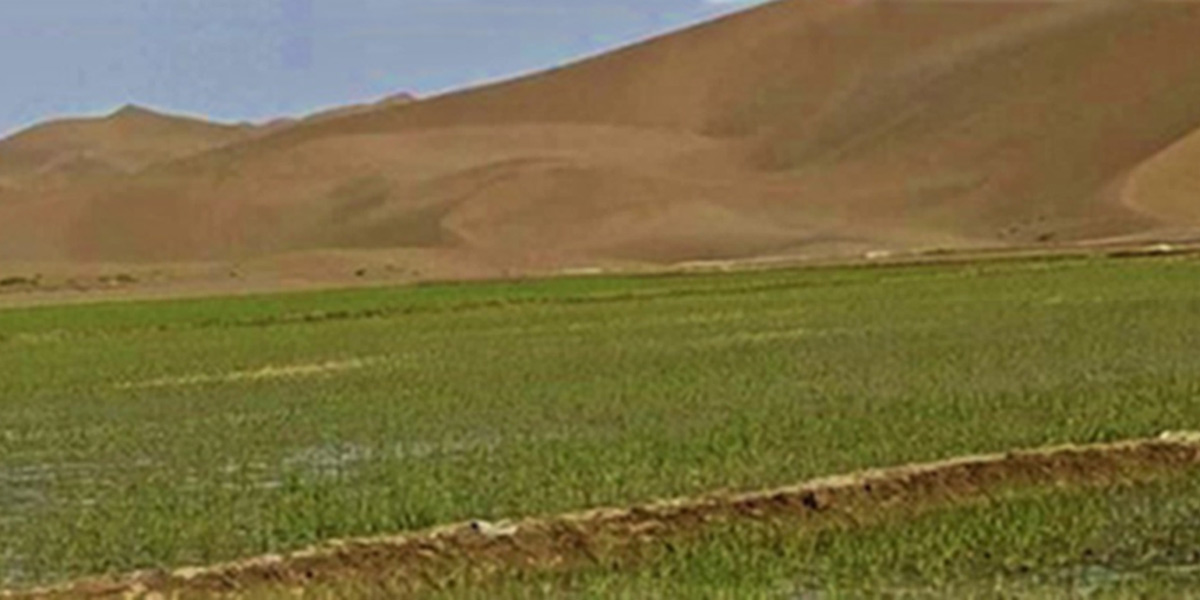
Saltwater cultivation may boost China’s rice production by nearly 20% and will be able to feed more than 200 million people, according to a Chinese researcher
20% of the world’s irrigated farmland, in Egypt, China, India, Bangladesh and much of Southeast Asia is contaminated with salt.
The Intergovernmental Panel on Climate Change has said that another 50cm (1.6 ft) of sea rise, just half of what’s expected by 2100 (see US National Oceanic and Atmospheric Administration), would swamp up to 1.9 million more hectares. In more ‘developed’ countries salinity has been caused by intensive agriculture.
After starting to grow rice in diluted seawater at home, agricultural scientist Yuan Longping, of the Qingdao Sea Rice R&D Centre, decided to move his technique to the desert, where fresh water is too valuable to be used for cultivation. Last January, the researchers planted the first rice crop on the outskirts of Dubai.
In June the group of Chinese scientists led by Longping was widely reported to have successfully grown and harvested salt-resistant rice varieties in the deserts of Dubai, developed by crossbreeding different varieties of rice.
They have now harvested a crop of ‘sea rice’ planted in east China’s Shandong Province, able to grow in tidal flats or saline-alkali land.

Saltwater cultivation may boost China’s rice production by nearly 20% and will be able to feed more than 200 million people, according to Longping, now known as China’s 'father of hybrid rice'.
India Today has reproduced an interesting short video, issued by RT’s video news agency, which quotes the concerns of the Deputy Director of the Qingdao Centre, Guodong Zhang: "If there are natural disasters, as China has a large population, it’s difficult to rely on importing food from abroad as there are logistical barriers. If the Chinese go hungry because of crop failures caused by natural disasters, there will be social unrest and destabilizing factors for the world. are the staple food of the Chinese people, and 60 percent of them depend on rice. With the joint efforts of our team and the whole of society, more than 65,000 square kilometers of salt and alkali land will be transformed in China."
He pointed out that turning barren land into fertile farmland will enable China to feed the entire country and will therefore be beneficial to peace and stability.
“Conventional breeding just takes too long, and this problem is urgent”
These words of Ajay Parida, executive director of India’s M.S. Swaminathan Research Foundation, whose scientists are developing genetically modified rice using genes from mangrove trees which can tolerate salt concentrations of 12-15 grams per litre, have been disproved by the success of the conventional cross-breeding techniques, pioneered by the Qingdao Sea Rice R&D Centre.
Post script: in more ‘developed’ countries salinity caused by intensive agriculture should be addressed by a return to sustainable farming and water management. In contaminated areas soil may be rebuilt by incorporating organic matter and planting different crops in stages – see "Relative Salt Tolerance of Crop Plants" (USDA).
Source: CHS-SACHETAN https://chssachetan.wordpress.com/2018/10/27/sea-rice-as-genetic-modification-struggles-crossbreeding-succeeds/










